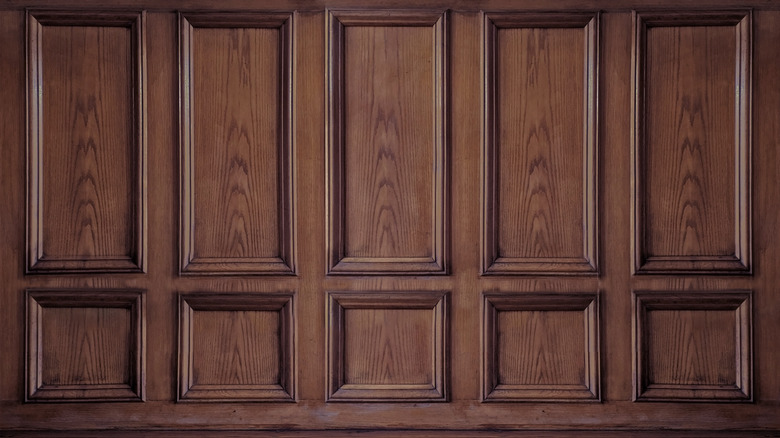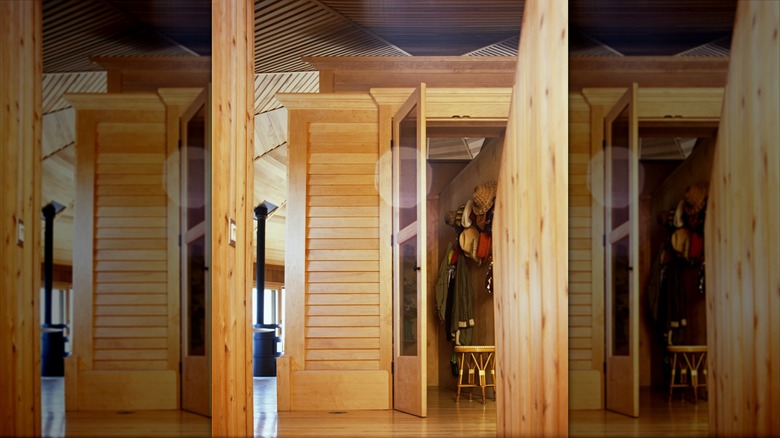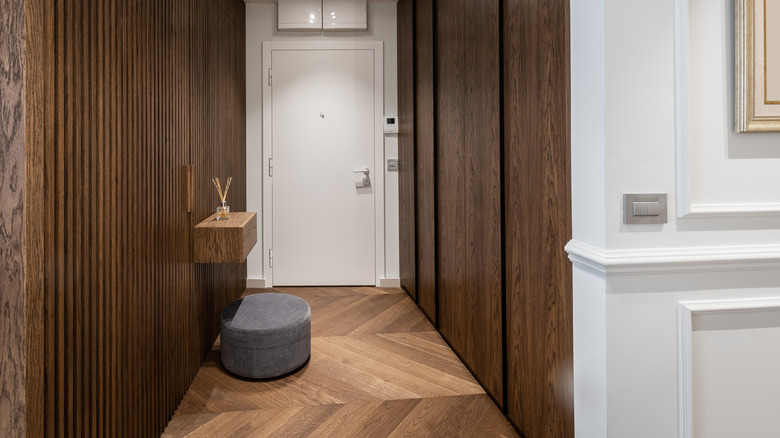Give Your Entryway A Richer Look With Wood Drenching
Creating a cozy space to welcome guests in your entryway can be a challenge. It tends to be a pretty small area, which means the usual ways of decorating and outfitting a room do not always translate well. Too much stuff and visual interest in this area can feel cluttered and busy, while too little can read as sterile and lacking personality. Taking a cue from the color and pattern drenched look that's popular in design circles, wood drenching may just be the way to add texture and interest to an entryway of any size without overwhelming or underwhelming the space. The process of using wood finishes on everything from floors, ceilings, and walls, as well as furniture pieces, millwork, and accent décor, can add a lot of warmth and interest to the space people encounter first.
While color drenching and pattern drenching are usually associated with more maximalist design styles, the neutral and organic feel of wood can feel very minimalist, especially when the space has only a couple of pieces of furniture in it. It's a great way to get a lot of visual impact without having to bring in a lot of elements, but can still look finished and stylish. It's also a technique that can work with a number of different aesthetics depending on which woods you use to deck out the space. You can also echo the wood tones in other spaces in the home to tie it all together for a cohesive look. This approach also works beautifully in other small spaces like hallways and stairwells.
How to wood drench a space
When wood drenching, the goal is to choose very similar finishes that provide a unified feel, even if the material and shapes are different. The walls are a great place to start. You can choose complementary wood materials for paneling to go with flooring, encasing the entire room in the same wood. Do not forget the ceiling, which can be covered in the same paneling. This blurring of the lines between ceiling and walls is perfect for making a space feel taller and larger than it actually is.
The next element to consider is furniture, which can be as simple as an entryway console in a similar or nicely contrasting wood. In a really small space, install a simple wood shelf to help clear the clutter if you don't have a lot of floor space. While you can punctuate the room with small bits of upholstery, pottery, mirrors, and artwork that stand out, you can also go for a full wood look with accessories like wood lamps, sculptures, and vases to carry the wood look all the way through. Since these areas can be dark if there isn't an abundance of natural light, make sure to install stylish and layered lighting to boost the ambience. Table lamps, pendant lights, or sconces should do the trick.
The adaptability of wood drenching
The best part of wood drenching is that it is amenable to many different room styles depending on the materials you choose. An all-over dark paneling can read as traditional, while a sleek bamboo or light wood can be modern and contemporary. Painted white or weathered wood, like shiplap, can create a cottage or coastal vibe while pine planks give your entryway a homey and rustic cabin aesthetic. It's also the perfect chance to fill your entryway with mid-century retro wood paneling for a sophisticated style. Light colored woods are perfect for creating a casual Scandinavian style entry point, while bamboo can be perfect for a more tropical or Balinese feel.
Different visual effects and aesthetics can also be achieved by using different cuts of wood. Vertical paneling brings the eye upward while horizontal planks can widen it to make a small entryway feel bigger. Other great options are large wood sheets with wall moldings, ball and batten wainscoting, tongue and groove boards, or vertical bead board.


